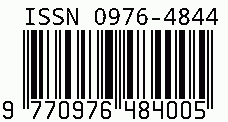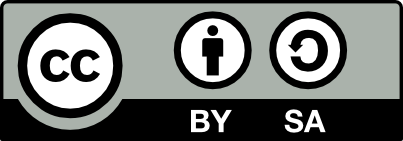
Journal of Advances in Developmental Research
E-ISSN: 0976-4844
•
Impact Factor: 9.71
A Widely Indexed Open Access Peer Reviewed Multidisciplinary Bi-monthly Scholarly International Journal
Plagiarism is checked by the leading plagiarism checker
Call for Paper
Volume 16 Issue 1
2025
Indexing Partners




















How to Publish a Research Paper
Here are the guidelines and steps for publishing a research paper in our journal IJAIDR; however, most of other online academic journals have similar guidelines and steps too.
Steps to publish research paper:
- Researching and Gathering Information
- First you need to decide the topic on which you want to research. You can choose a topic about which you are familiar with or about which you don't have much knowledge; it totally depends on you. But it should be relevant to the area of your primary learning and interests.
- Identify and decide the procedure, flow, steps, format that you would like to follow when researching and arranging the content which you will include in your research paper.
- Gather information and content for the research topic by studying already published research papers, reading from websites, taking surveys, doing practicals, discussing with the people already in the field; and note everything you got from all these. Keep notes about which content you got from which source; you will need these later.
- Arranging the Content
- Now you will need to arrange the content which you have gathered during the research. Create a document in a word processor software like Microsoft Office Word. The research document/article can be divided in 4 main parts:
- Introduction of research: It includes title of research, information of authors, abstract/introduction of the research and keywords.
- The main content of the research: It should include description, figures, tables, photos/images, etc. related to the research.
- Conclusion: It should include the ultimate conclusion derived after the research.
- References/Citations: It should include the information about the sources from where you gathered the content, like - books, research papers, web pages, news papers, etc.
- First, write down the title of your research; it could be the topic of the research too. If it is not same as the topic chosen then choose a suitable title according to the topic of the research. Ideal length of title is from 40 to 100 characters. It should be formatted bold, bigger font size (for example 24 pt), center aligned and Title Case.
- Write down name(s) of the researcher(s) below the title in Title Case. Also write their designation(s) or role(s) during the research, title of the department where the researcher(s) is/are working, name of the institute/college/university/company where the researcher(s) are working - all in Title Case below the name(s) of the researcher(s).
- Write 'abstract' section, with title 'Abstract', below the information of the researcher(s). The abstract is a small introduction about the research. You should derive 2-3 sentences from the Introduction, Main Content and Conclusion sections. It should be from 70 to 250 words. Mostly it is written within a single paragraph but sometimes, for clarity, you can divide it in multiple paragraphs.
- After the abstract, mention 'key' words of your research, with title 'Keywords'. The keywords should be mostly of one word; however more than one words can be used when all of them define a particular thing, for example: XYZ Principal, XYZ Force, XYZ Project. It should include the main nouns related to the topic of research and research content. Anyone should be able to guess the overall idea of the research from them. Choose 3 to 8 keywords. Format in Title Case and Bold.
- Writing second and main part of the research
- There should be multiple sections in this part with proper headings for each. In the first section, you should write about the introduction of the research with more details. You may describe the reason(s) behind the research in depth, the chosen method(s) and its/their effectiveness, objective(s) chosen for the research, etc.
- Then include the content you have gathered during the research. Include detailed information, photos/images, figures, tables, comparisons. Write suitable captions above the photos/images, figures and tables. It it better not to conclude anything in this section.
- At the end of the second part should be the conclusion of the research. Derive unbiased and easy to understand conclusion/result of the research. It should be written within 1 or 2 paragraphs with 70 to 250 words.
- At the end of the research, there should be references/citations of the sources which you have used in your research. Mark the content in the second part which you have copied directly, from other sources, to prove your points, with end notes in this section.
- If a research paper is cited then write the title of the research paper, name of the author(s)/researcher(s), name of the journal in which it was published, volume and issue number or date/time of publication, and optionally mention starting and ending page numbers and DOI.
- If a news article is cited then write the headline of the news, name of the publisher and date of publication. If the article is available online then write its URL/web address.
- If a book/magazine is cited then write title of the book, name of the author(s)/writer(s), edition number or publication month and/or year if applicable, name of the publisher, page number of the cited content, and ISBN of the book if available.
- The list of references should be numbered and in the order of their appearance in your research paper.
- After completing writing everything, check the whole document for errors of spelling and grammar. Verify that proper headings are given with consistent formatting. Ensure that the content is aligned properly, and there is no unnecessary/avoidable blank spaces. Show the document to your guides, colleagues, friends; and improve it if there is any valid suggestion.
- The next step should be to check the document for plagiarism. Plagiarism checking is essential for journals to publish only high quality original research. If you are from a university/college, they should have an account with a plagiarism checker website or they should have plagiarism checker desktop software. The plagiarism checker compares the feed document with thousands of researches already published, and shows the plagiarized content. You should try to reduce plagiarism as much as possible. Generally, journals don't accept researches having more than 20% to 30% plagiarized content for publication. However it is better to check for plagiarism before submitting research for publication; but if you can't then you may not need to worry, the journal where you will submit your research paper would check it before publishing.
- Now you will need to arrange the content which you have gathered during the research. Create a document in a word processor software like Microsoft Office Word. The research document/article can be divided in 4 main parts:
- Submitting Research Paper
- Generally you will need to provide title of the research paper, abstract, keywords; provide name(s) of the researcher(s), phone number(s), email address(es), department(s), organization(s) and roles of the participant(s)/author(s)/researcher(s) of the research; and may optionally need to provide address details when submitting research paper. Have all these details ready, along with the research document, before starting filling the submission form.
- Now it's time to find a suitable journal to submit your research paper for publication. Our journal, IJAIDR, is a multidisciplinary online journal and so we are publishing research in all disciplines. And, as we have reviewers from all around the world, we are accepting research paper written in almost all spoken languages. You can submit your research paper by feeling up the form and uploading the research document file. Or you can search on internet for any other suitable journal as well.
- When filling the form for submission, provide all the details in proper format. You should write Abstract in Sentence case, email address in lower case and all other information in Title Case if these are in English like Latin based languages. It is better to never fill any details in UPPER CASE. Also select and upload your research document, and then, after verifying all the details, submit the form. Generally, you will receive an acknowledgment email, with an id number, about the submission at the primary email address specified during filling the form. Through the id number, you would be able to track the status of the submission and publication.
- The submitted paper is then overviewed by one or more of the editors for qualitative factors. Editors generally also check for plagiarism during this step. (We are using
for checking plagiarism at this step. Maximum 30% plagiarism is accepted in research document for publication in our journal.) If the paper is found enough creditable then it is passed on to one or more of the reviewers, having knowledge of the similar field, for peer review. (However, some journals may not be peer reviewed and they may directly publish the paper.) If it is not found enough creditable then it is rejected and notified to the researcher(s)/author(s) along with the feedback and the reason(s) behind the rejection.
- There are different approaches for peer reviewing:
- Open peer review - where both the reviewer(s) and the researcher(s)/author(s) is/are aware about each other's names.
- Single-blind peer review - where either reviewer(s) is/are aware of the name(s) of the researcher(s)/author(s), or researcher(s)/author(s) is/are aware of the name(s) of the reviewer(s).
- Double-blind peer review - neither the reviewer(s) nor the researcher(s)/author(s) is/are aware of the names of each other. (Our journal, IJAIDR, is a double-blind peer reviewed journal.)
- The peer review time depends generally on the length and complexity of the content, and sometimes availability of the reviewer(s).
- After the peer review, you are provided feedback about your research. If the reviewer(s) find any discrepancy in the research, you may need to edit the research document appropriately and you need to resend the document for peer review.
- After passing the peer review, researcher(s)/author(s) need to pay the publication fee and any other optional fees (printing and mailing of hard copy of the certificate of publication). Save the screenshot of the payment/transaction.
- Then download, read, fill and save the copyright permission form and undertaking form. (The undertaking form is about accepting that you take the responsibility of the content in the research document and it is your own research. The copyright permission form gives the permission to the journal publisher to publish your research paper.) Then submit these forms and the proof of payment.
- After the copyright permission form and undertaking forms are verified, the fee(s) is/are paid by you and received and verified by the journal/publisher, the research document is edited and/or formatted by either and editor or a staff member of the journal, or told to edit/format to the researcher(s)/author(s), according to the journal's standard predefined format, and then it is published. The researcher(s)/author(s) are notified about the publication, along with digital/e-certificate(s) of publication and the URL/link where they can view their published research paper.
- Sharing and Marketing
- To let your research reach to maximum of the people around the world, we submit them to some of the journal and research database/indexing sites.
- You should also share your research through as many mediums as possible. Here are some of the most highly popular mediums/websites:
- You should also share your research on social media websites like Facebook, Linkedin, Twitter etc. There should be option/buttons to share the research from your research paper's page. If there isn't such a button/option then share the URL/link of the page in the social media along with title, abstract and keywords for SEO.


 doi
doi
CrossRef DOI is assigned to each research paper published in our journal.
IJAIDR DOI prefix is
10.71097/IJAIDR
Downloads
All research papers published on this website are licensed under Creative Commons Attribution-ShareAlike 4.0 International License, and all rights belong to their respective authors/researchers.


